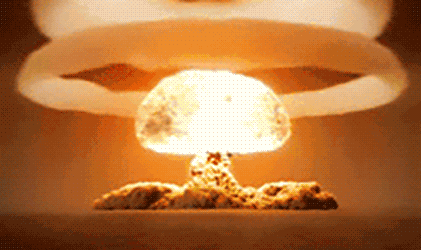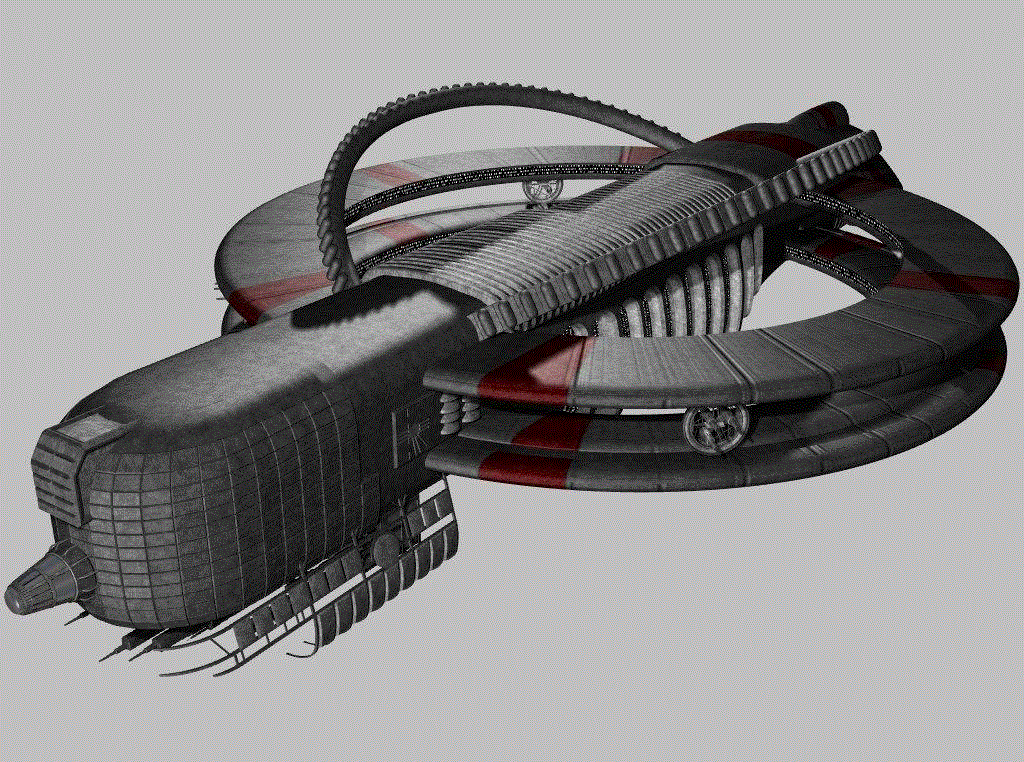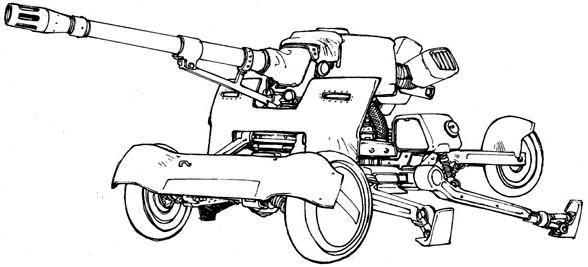


 Clariont Battle Ensign Flown By Militry Bases And Ships. |  Clariont Battle Ensign Flown By Militry Bases And Ships. | ||||
|---|---|---|---|---|---|
| You (players and GMs) will have to be familiar with the following Policy Manuals: UGC RE/DF Captured, Reclaimed, and Impounded Mat'eri'el/Detainee PolMan UGC RE/DF Artillery and Fire Support/Air Strike PolMan UGC RE/DF Weapons: Mass Destruction/Effect PolMan Definitions Used In This Document | |||||
Impounded Mat'eri'el/Detainee PolMan | |||||
The ROBOTECH EXPEDITIONARY FORCES and subordinate ROBOTECH DEFENSE FORCES , in reference to enemy combatants and mat'eri'el taken in combat, is to detain and, whenever practicable, re-deploy or re-utilize the mat'eri'el. This policy was mostly developed during the Atorian conflict; REF Battle Groups were tearing the Ator Spacy apart, in wholes and in parts. Whole systems would be de-facto Interdicted by Ator Warship
A new problem arose; The Malth Encounter, a fairly typical small-scale meeting encounter, netted the UGC 5 major Ator capital ships and about 25,000 Ator Spacers (at least 2,000 of them Fehrans). What to do with them? For many reasons, the Ator Ships were pressed into service as REF Auxiliary vsls; Two as hospital ships, three as repair ships, and most of the rest as minimally manned "Mobile Supply Points" (essentially self-propelled warehouses). One was used as a prison ship (at the still in-famous Mare Planitia Anchorage). Another was scrapped out right. This is how the policy began; War time necessity became peacetime policy. Whenever any enemy mat'eri'el is captured, reclaimed, or impounded, it is sent to a yard or supply point to be picked through by REF and RDF personnel for whatever they need (they still have to sign for it). Typically, explosives and other chemicals that are not particularly useful are rendered down to the component elements to be re-utilized in a more useful form (though occasionally land mines are taken by ground pounders to encircle their camps). The REF and RDF's never "arrest" anyone taken in combat- You can only arrest a CRIMINAL, and, while the soldiers, Marines, and Patrolmen may very much hate the people they've taken, there's no evidence in their hands these people have committed a crime (less rebels and insurgents, and they still fall under the enemy combatant category for these purposes). Therefore, the REF and RDF's "detain" those taken- They are not free to leave, regardless the legality of their actions. Rebel and insurgent detainees are transferred to the Galactic Investigation Service. (Even those detained by the Patrol for smuggling, etc, are DETAINED, not arrested; the arrest is left for GIS or local law enforcement agencies.) The only noteworthy exceptions to this policy is civilians captured inside REF/RDF bases engaged in clandestine activities (which usually means "summarily shot") and REF/RDF personnel discovered in the act of committing a crime (theft, prostitution, etc.). Every fleet has a FOLSOM-Class Detention Ship for temporary holding, until transfer to an ATORIAN-Class Prison Ship can be arranged. There are three distinct terms that must be kept in mind: Captured: Enemy personnel and/or mat'eri'el that they made/bought themselves; Second Generation Ator Sisters would qualify, but not first-generation sisters. Likewise, an Ator Sojourner-Class Cargo Vessel PURCHASED legally and used as, say, a fleet supply/treasure vsl would be considered "captured." Reclaimed: Enemy personnel and/or mat'eri'el that was captured/stolen from the UGC. Example: An FAG-36 Hornet taken in a raid is later reclaimed when REF Marines storm the Ator base. Impounded: Otherwise lawfully held property of UGC citizens taken during a raid of unlawful activity. Example: REF Army storms a pirate base and impounds the property of UGC civilians who were part of the piracy. This policy also covers Hostages: This is the legal title placed on any UGC citizen OTHER THAN MILITRY PERSONNEL taken captive in a raid. Generally, they are made slaves. Those recovered are labeled as "rescued," though this term is often debatable in the case of second generation hostages. Hostage Policy: Hostages reclaimed by RE/DF personnel are treated as the victims of war crimes; However, as necessity presents itself (such as Ator Sisters and other Hostages), they may be detained for psychiatric treatment as long as necessary to re-integrate them into society. They are, at no time, to be treated as enemy combatants, INCLUDING THOSE TAKEN WHILE UNDER ARMS (combatants). Enemy combatants can be detained "for the duration of the conflict and re-patriation can proceed." This generally turns into a life sentence for malconts. Soldiers and Spacers for "Enemy Empires" (such as the Steiner Empire) are, almost exclusively, returned within days of the cessation of hostilities. The only current exemption to this is those found to have violated War Detainee Authority Prison Policy and/or UGC law; Essentially, they broke "a" rule, of some sort, or broke the law outright, while incarcerated. This is generally reserved to very serious crimes: For example, murder, rape, arson, theft of a serious nature (such as militry blueprints, or from fellow inmates). Whenever possible, the detainees are re-patriated to be tried there; However, murder and rape can carry the death sentence when committed by any inmate in the UGC Federal System, and these are not always re-patriated. Otherwise, all inmates are re-patriated at the end of hostilities (earlier, on occasion, upon a prisoner trade agreement). The terms of parole are EXACTLY AS those offered by the enemy empire; When the UGC faced off against the Alaian Conglomerate, for example, the Alainan terms of parole worked from the bottom up in rank; The lower the "convict's" rank, the sooner they were returned, but they had to confess to a War crime to gain parole. Then in order of capture; The earlier you were captured, the earlier you were released. Finally, you had to agree never to take up arms against the "peace-loving peoples of Alaian" again. Therefore, Alaian POW's were offered the same terms of parole; Since both the UGC and the Alaian Conglomerate's Militry Code Of Conduct forbade the confession of a crime not committed, no prisoners could be exchanged. (The Alaian Conglomerate Code Of Conduct carried the death penalty for violations of its tenants; The UGC's COC carries varying degrees of punishments, including none under most circumstances.) As a result of this impasse, Alaian Conglomerate prisoners were not exchanged until the close of the conflict (after the Treaty Of Three Moons was signed). | |||||
The Artillery And Fire Support/Air Strike Policy Manual was birthed of the debacle on FBX 21555320. Assault Commanders, overly mindful of the Captured, Reclaimed, and Impounded Mat'eri'el/Detainee Policy, would hesitate to add artillery support other than to add Destroids and tanks to the fray, until it was too late to be of much effect; While not a War losing mistake in and of itself, it did effect the course of the War in the negative. To prevent this in the future, the REF General Command established the Artillery And Fire Support/Air Strike Policy. It reads simply: artillery or other fire support and/or air strikes appropriate to the tactical situation." What this means is if any calls for air or artillery support are made, the mission commander MUST send it. The Assault Commander may choose the type and amount of support they send, but it SHALL be equal to the threat. To accomplish this, the Assault Commander must know the following: Type, of target; Position, of target; Support, requested (a single 40CM round from a HAS-1 or 2, Guardian air strike, nuclear/Reflex bomb, etc). The type of support requested must be reasonably equal to the threat, without being unreasonably over-kill; Requesting a single 40ᴄᴍ round on an Invidia bunker, for example, will have just about no effect whatsoever ("Whader ya trien ta do, pissum off?"). Likewise, requesting a Reflex or nuclear missile for a single machine gun nest will probably NOT be approved ("I dunno, mebbe es suicdul, tryen to tage is squad widim."). The Assault Commander, then, authorizes the type of support; Again, based on the On-Scene Leader's recommendations, the support must be reasonably equal to the target. The GM, who will probably be playing the Task Force, Mission, and Assault Commanders (and will be playing the artillery support) should keep this in mind- The Allies dropped millions of tons of bombs trying to destroy HITLER'S ball bearing factories, and missed one line, keeping the NAzI War machine rolling. The US dropped 2 bombs on Japan and ended the War in a week- Taking hundreds of thousands of civilian lives in the process. | |||||
 |  | ||||
| GM's: Your players should be familiar with the WMD/E policy, as they may have to order and/or execute the use of such a weapon at some point. There are technically two terms in effect here: The First is Weapons of Mass DESTRUCTION, and the other is Weapons of Mass EFFECT. WMD's are designed to destroy large areas and kill massive amounts of people in a single object or use, such as a Relfex, nuclear, or anti-matter weapon. WME's are designed to destroy, in large fashion, a specific target with the greatest possible shock value (such as the GCW era al Quaeda attack on the United States). The term weapons of mass destruction has two connotations. In its broader, literal sense, it is used to refer to weapons whose destructive power far surpasses that of guns or conventional explosives. However, the term is more often used in a narrower sense, to refer specifically to nuclear, biological, and chemical (NBC) weapons. Since the Atorian attack on the Garuda Renonana Colony, the UGC has greatly intensified its efforts to stop the spread of anti-matter, reflex, nuclear, biological, and chemical weapons. Fortunately, only a few groups are known to use WMD's: One faction of rogue Tiresian Malconts (who were hunted down by other Tiresian Malconts), Fehran Malconts (several factions have attempted to use nuclear weapons; All have failed), and Invidia Malconts (in defense of their hives only). Upon detection of the use of such a weapon, the Mission or Sector Commander is authorized to retaliate with such a weapon (such as using a Reflex weapon on a Fehran SLAVE Master-Class that launched such a weapon), and to use WMD's as a defensive tool AFTER ALL OTHER OPTIONS HAVE BEEN EXHAUSTED. Alternative option include: Using sand-casters, anti-missile missile and laser batteries to destroy/disable the weapon; Placing militry assets in the path of the weapon (most REF and RDF vsls are more than capable of surviving such an attack); Placing unmanned civilian assets in the path to disable or befuddle the weapon; And raising planetary shielding defenses. Use of such weapons must weigh the probable death and injury/sickness toll against the probable death and injury/sickness toll if the weapon reaches terminus: However, generally speaking the use in hard vacuum is unrestricted by such consideration. Reflex weapons, having no discernable radiation, are preferred to nuclear weapons; However, the Mission Commander has authorization for final determination of what weapon is to be used. Chemical and Biological Weapons: Non-lethal chemical and biological weapons are not only permitted, but encouraged for use. Such weapons have been used many times, by and against the UGC, to great effect; During the invasion of Aruonana during the three-way War with the Steiner Empire/Natuna Conglomerate, for example, the REF used a genetically engineered bacterium designed to make the Arounan population too sick to even move- Comparable to influenza in Humans and T'sentraedi. With the entire population sick, the system was a walk over, and REF forces spent more time treating civilian and enemy sick than fighting. Note that, while encouraged, this policy is VERY restrictive- Any biological or chemical weapon with a greater than 10% chance of causing death OR PERMANENT DAMAGE is banned under the policy. For example, Pepperspray will kill a Flyjt in concentrations as low as 1PPT, yet has no discernable effect of any sort on a T'sentraedi. It will usually lay out a Human or Steinerian in a first pass. Sarin, which is lethal to MOST life forms, will not effect a Flyjt or a T'sentraedi; It will leave an Invid in pain, but not kill them. The Mission Commander must decide how and in what concentrations to use these tools. | |||||
| Mission Commander: Commander of all UGC forces (including any Mercenries under UGC contract) in theater. Usually played by the GM. Assault Commanders: Commander of a given planetary assault. Usually played by the GM. Task Force Commander: Commander of any fleet action other than main force (such as scouting, feint, re-supply convoy fleet, etc). Maybe be either GM or PC. On-Scene Leader: The leader of any group of REF personnel and/or in a given situation (infantry squad sergeants, DC Team leader, etc). Usually a PC. | |||||




